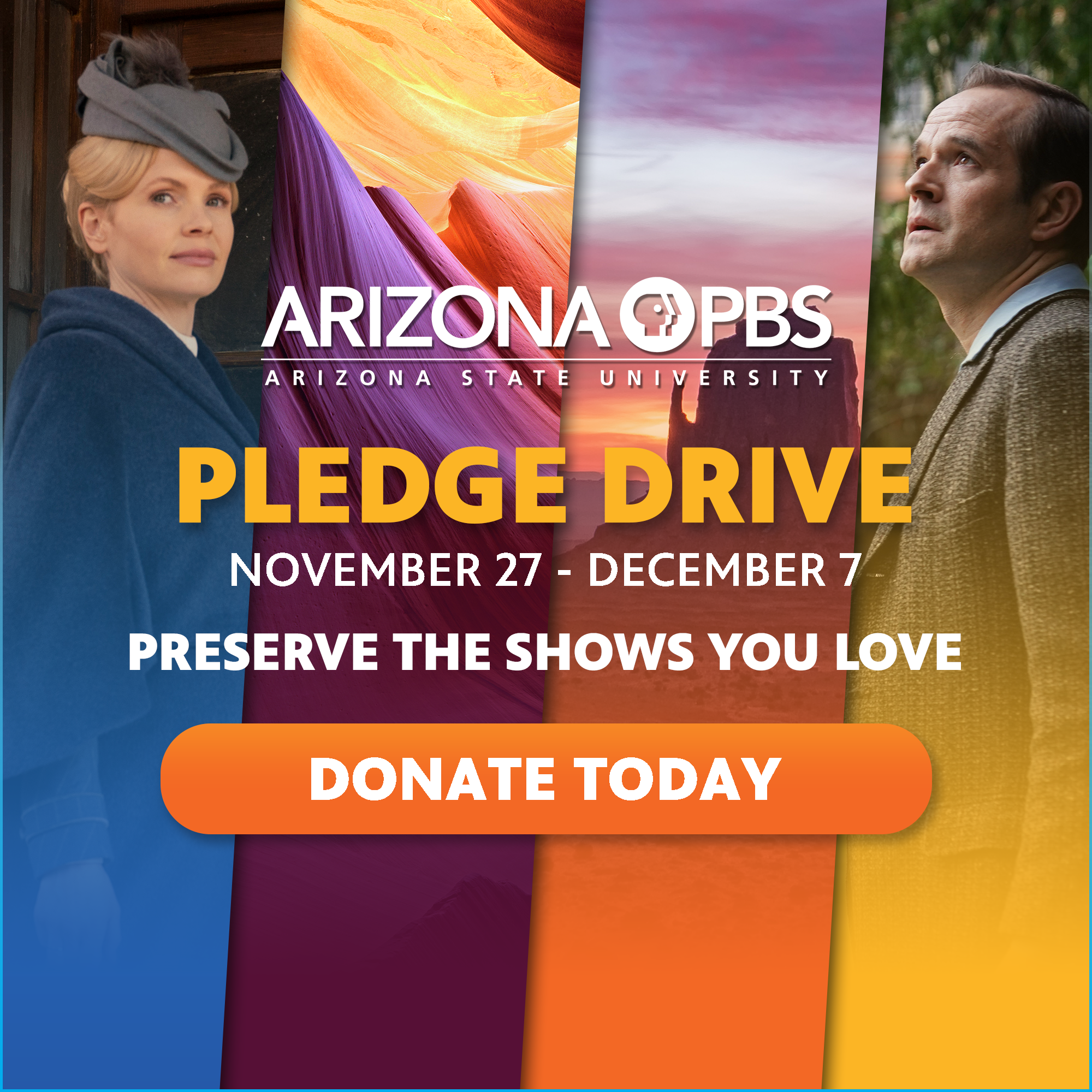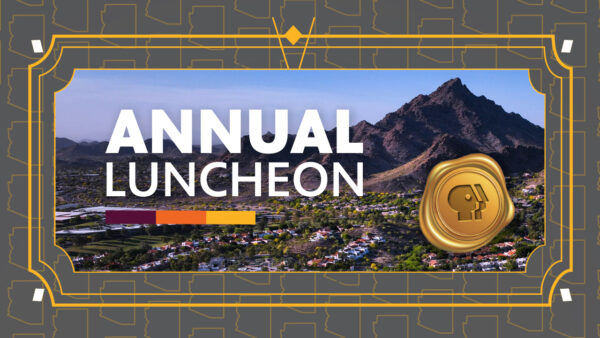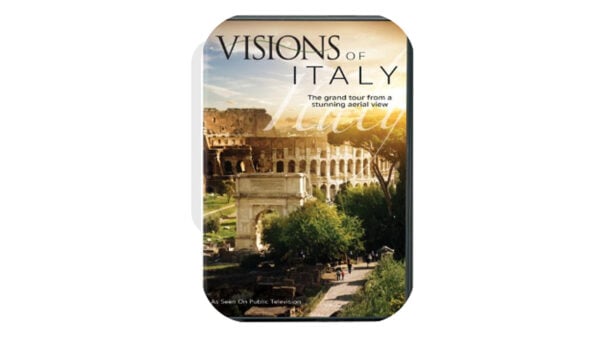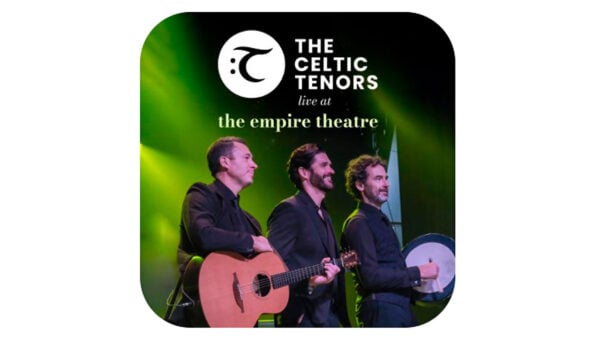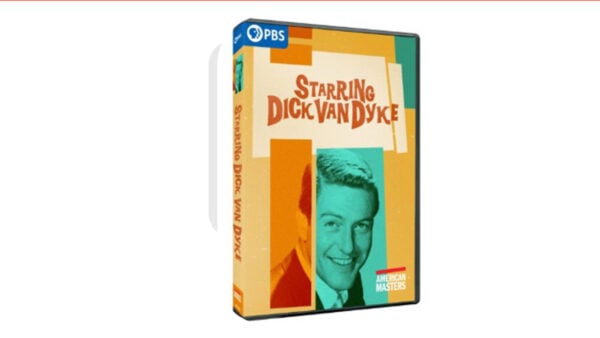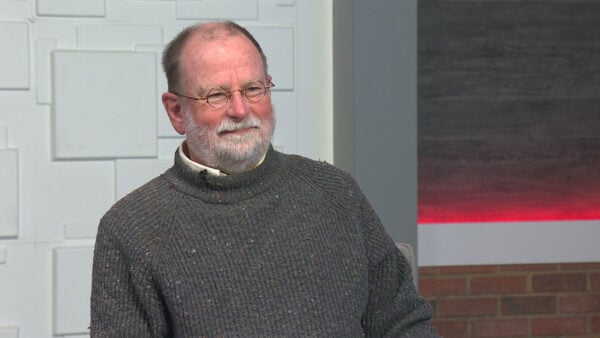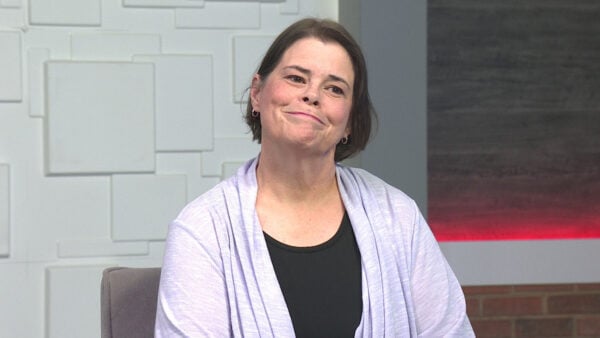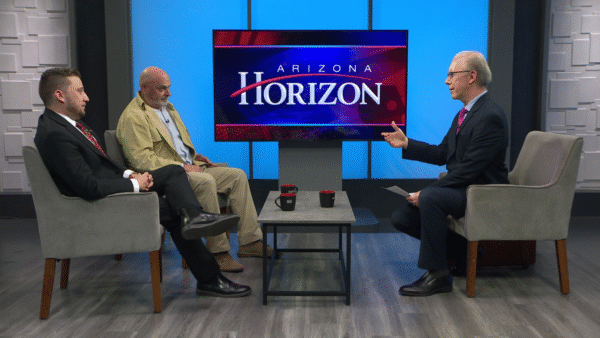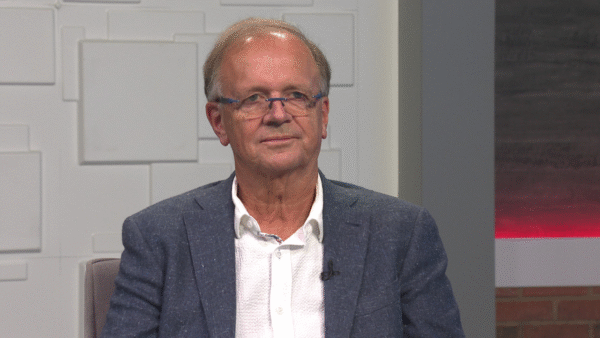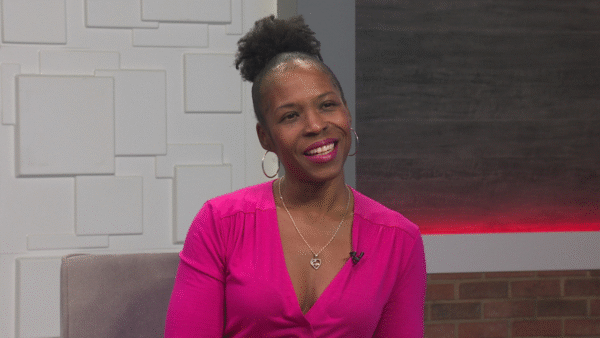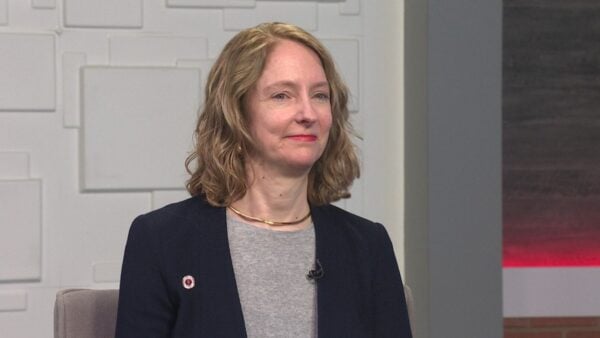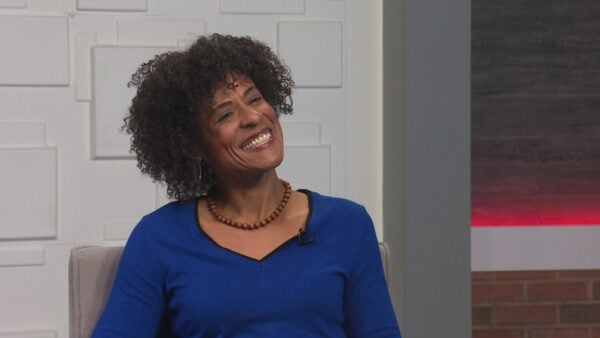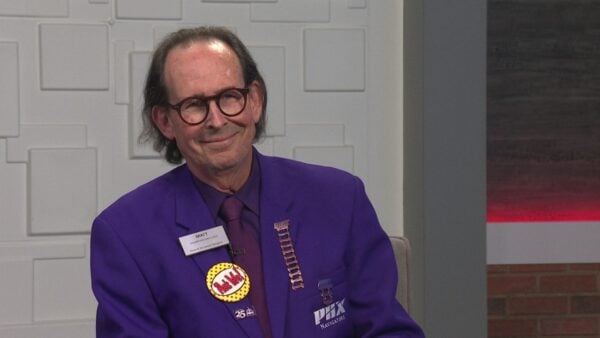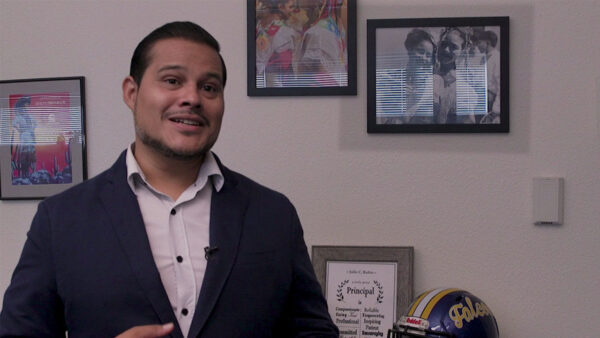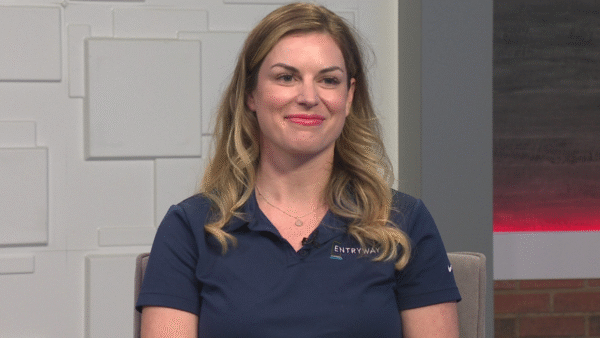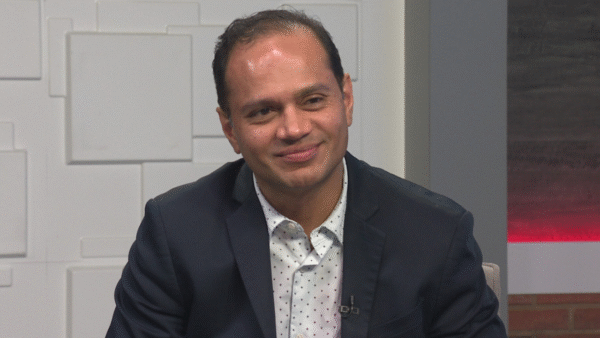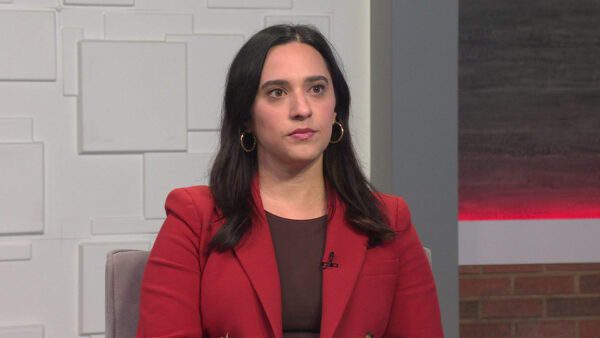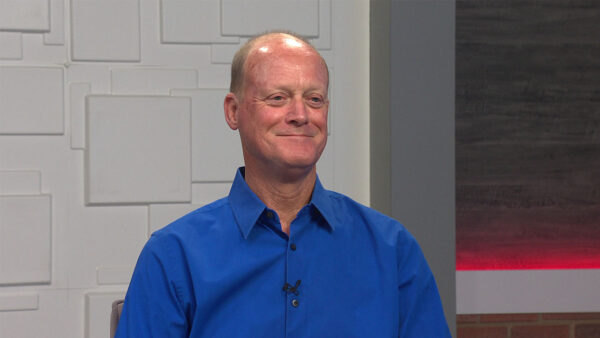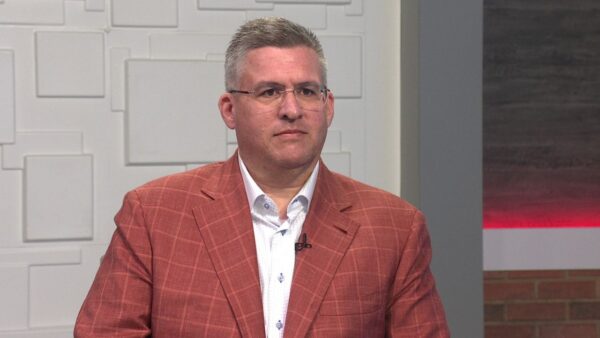Jeremy Rowe shares rare stereographic images of territorial Arizona that will be part of a book he’s working on that has been designated an official Arizona Centennial Legacy Project.
Ted Simons: Tonight we continue our series commemorating Arizona's centennial by taking a look at photographs of Arizona from before statehood. The images belong to Jeremy Rowe, who for years has accumulated a vast collection of historic Arizona imagery. Rowe's latest project, a book of stereographic images of territorial Arizona, has been designated a centennial legacy project. Here to share some of his stereographs is Jeremy Rowe. Good to have you here. Thanks for joining us. These are fascinating. What is a stereograph?
Jeremy Rowe: It's a set of images taken with a camera that has two lenses. Putting them in a viewer and viewing the left image to the right eye and the right image to the left eye, your brain fuses them. When we were kids --
Ted Simons: View masters.
Jeremy Rowe: Yes.
Ted Simons: Specific equipment is needed, correct?
Jeremy Rowe: Correct. You can do a single lens camera and move it. It's taking a picture with the lens at the position of each eye and the perspective is reassembled to create a 3D.
Ted Simons: When were stereographs popular?
Jeremy Rowe: In the 19th Century and became popular in the form in Arizona in 1855 and collected, traded before TV, before radio, before multimedia. You couldn't print pictures in magazines and newspapers so people have original photographs in stereo views and buy them and put them in piles in their parlors and you would share images them back and forth. And it was a big deal. In the 1890s, they started to produce them in sets and use them for education and schools would have boxed sets. And they were popular in the 1930s and '40s.
Ted Simons: When did they lose favor?
Jeremy Rowe: Superseded by other sorts of media and there was a resurgence in the 1950s with Eisenhower and others with 35 mm cameras and there's a certain undercurrent of stereo photography but not like back in that area.
Ted Simons: Let's go to your images. One of the earliest images I've seen of Arizona, we're talking 1864 here?
Jeremy Rowe: Yep. There were sketches made and artists would come along with expeditions. But they didn't have photographers with them and this gentleman that took this photograph was an engineer from California that came across with an expedition and made images and the image we have here is a stereograph, late 1864, early 1865, of the Navajo deportation in the northern part of the state and there are four Anglo gentlemen we're trying to identify, but there were two images made at this time.
Ted Simons: Fascinating stuff. Let's move ahead seven some odd years and an expedition of the Grand Canyon.
Jeremy Rowe: This is the Wheeler expedition. One of the two surveys of the Grand Canyon that put Arizona on the map. The images they made of these were reproduced in magazines and journals and this is the survey that rode upstream into the Colorado river into the Grand Canyon. To be able to do the survey work.
Ted Simons: Isn't that something? Next photograph, John Wesley Powell. Up in northern Arizona.
Jeremy Rowe: This is the expedition that came downstream from Utah and didn't have to go through the other problems. Powell only had one arm and
posed with the missing arm back. This is a shot of him. He -- these images were the first images that people saw of Arizona. The cactuses and so on.
Ted Simons: And again, stereographic images.
Jeremy Rowe: It was a small camera. Easy to shoot. Powell paid for his house after the survey by selling the stereographic shots.
Ted Simons: Whiskey row.
Jeremy Rowe: It burned several times and this is the earliest. 1874. This gentleman, Dudley Flanders, was one of the first people to come to -- Arizona and this was done in the spring and he started in Prescott and worked to Tucson and across to San Carlos.
Ted Simons: What's going on there?
Jeremy Rowe: Your brain picks out the highlights and shadows details and fuses them together. So often photographers would take advantage of that by under or over-exposing the two sides. It got more detail. By having highlight detail and shadow detail your brain was able to see a better quality image.
Ted Simons: Interesting. This is fascinating. This is in Tucson, in 1874, and we're going to look at a -- this is a circus from Mexico traveling through?
Jeremy Rowe: Traveling through. They would travel from Mexico up through Arizona as part of their circuit. There were 3,000 people in Tucson during this era and it's an elaborate circus. Someone performing on a high
wire. And a gentleman hanging by his feet spinning and performing on horseback. This belongs to a friend of mine. This was one that I have borrowed. It's very, very unusual and the only copy that surfaced public or private that I've run into so far.
Ted Simons: Hanging around the ring, no safety net. OSHA would be horrified. Let's move up to San Carlos, this is a relatively -- I've seen this before.
Jeremy Rowe: John CLUM was a famous person. He had a very elaborate history in Arizona and moved on to Alaska. The images you see in almost all of the textbooks is this image. His portrait of this. This is August 1874. A week after he arrived at the San Carlos reservation and took this job and landed here and this is him decked out.
Ted Simons: I was going to say, definitely a posed photograph. The next one is posed as well but this is outdoors and anyone back east or wondering about Arizona and the west, would look at this photograph and go, my goodness.
Jeremy Rowe: This is general George crook who fought the Apaches several times. He was here in the 1870s and back again in 1875 and 1876, trying to capture Geronimo. This is the -- the major scouts, and the famous scouts appear in this. Crook wore a PITH helmet and he had mutton chops and elaborate beard, that was his style. This is another Flanders image.
Ted Simons: We talk about the equipment used not only to take the photographs but to view them. And you brought things on set. This is the stuff, isn't it?
Jeremy Rowe: This is the stuff. This is the camera that would have been used. Two lens, one left eye and one right eye. Typically, done on glass plates and all had to be carried in the field. You would mix a syrup and pour it on the glass plate and sensitize it with silver salt and in a plate holder and back in the camera and expose it, finish the processing and pack it up and go. You can imagine being in a small dark tent with ether and vapors and try doing this before it dried. And you had to carry a plate into the field and expose it and --
Ted Simons: How heavy?
Jeremy Rowe: It's not heavy. Fairly light. But it would be a horseback activity you would carry around.
Ted Simons: What's this?
Jeremy Rowe: It's a stereo viewer. Two lenses. You've got the stereo card printed with the right and left eye images and hold it up and focus and be able to run through and people would pass these around in the parlor to see what friends were doing and historians like these because you have two images and you have one that you can reproduce well and those are contact prints so that the negative is not enlarged. So they're very, very sharp if correctly focused. So you scan and zoom in and do tremendous forensic analysis and pull information out to be able to identify.
Ted Simons: Relatively rare to find these things?
Jeremy Rowe: There are millions of the cards. Arizona cards are rare compared to other areas but there are many cards out. Many antique stores have the viewers and scopes but few have Arizona material. I've found 6,000 titles and looking for many years and only 700 copies -- most museums have only a few dozen.
Ted Simons: We have a few more. Especially if it deals with technology and growing in Arizona. Including the Colorado river bridge at Yuma with the first train crossing. 1877.
Jeremy Rowe: This was typical images. People were trying to sell Arizona. The building of the towns and camps and forts and mines and this is the first locomotive going across the bridge. From California into Yuma and you see native American workers in the back and it's a technology example of the times.
Ted Simons: And the next one is a technology example of a earlier time. The big house was still there.
Jeremy Rowe: There's a gentleman posing on top gives you scale. Without that person on the top, it was difficult to tell how tall it was and the artist would vary and exaggerate that and the gentleman took this, camping out here as he was making these images and stayed for two or three days and made a variety of images.
Ted Simons: And other images as well. This is fort life, Apache scouts and others at camp Verde. 1880. Looks relatively staged here, I guess?
Jeremy Rowe: This is a stage shot of what is supposed to be a renegade and Apache scout with a variety of officers and other men. This was set up carefully with the spacing between the people. It's got a tremendous depth and range within it.
Ted Simons: That's fantastic. Fort McDowell. There's a cactus here and did you ever try to look for it?
Jeremy Rowe: There's a couple you could track that was popular in the teens. Many of the earlier cactuses were large and had been abused and weren't there anymore. But fort McDowell was an important part for protecting this area. These guys are showing the problems they had -- making it safe for people to come to Arizona.
Ted Simons: And how big these cactuses can get. You've got tons of these. Postcards apparently. Huge. Why do you do this?
Jeremy Rowe: Oh, as I grad student, I ran into a photograph at a local swap meet and started getting excited and interested and the more photos you get, the more stories you compile. So I've got almost 35,000 images in a private collection and research and write and make them available for use and work with the local museums. Phoenix art museums, William plaza museum and many local galleries. There's an exhibit this weekend at art intersection, so trying to get things out and as you find more people with an interest, you find more images. It's a lot of fun.
Ted Simons: Do you find stuff at little shops in Payson or Winslow?
Jeremy Rowe: Not so much anymore. There are a lot of people looking and every so often, something will pop out. When I started looking for these, I looked at where people were investing and finding images there. Kansas city and Boston and Philadelphia. In Amsterdam there is a mining company that put investments in Arizona and sent pictures back to show how the money was being spent.
Ted Simons: That's great stuff. Quickly, centennial legacy program, what's that?
Jeremy Rowe: The book I'm doing, I applied for a centennial legacy status for the book, to get funding to get the book produced and it's one of the projects. You can apply for them to look at projects and they pick and select projects for that. It's identified as a project that helps to support the centennial, that's coming up and build awareness and history of Arizona.
Ted Simons: It's a great collection, fascinating. Good to have you on the program. Thanks for joining us.
Jeremy Rowe: Appreciate the opportunity. Thank you very much.
Jeremy Rowe:VintagePhoto.com
